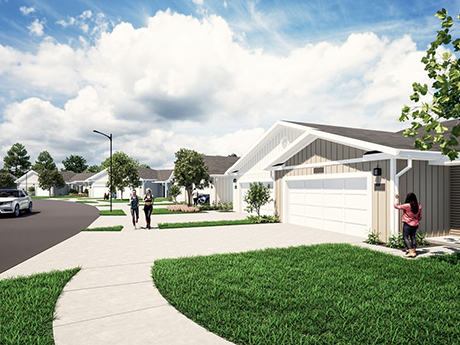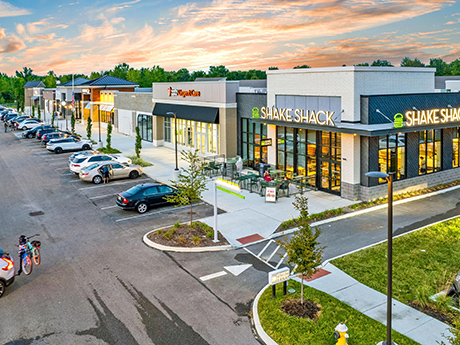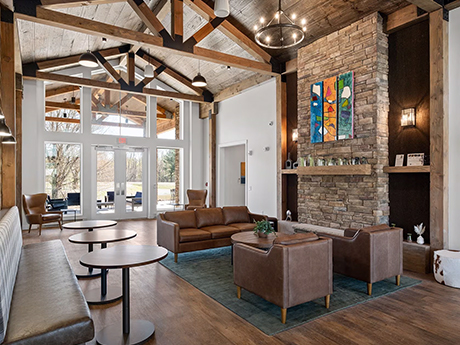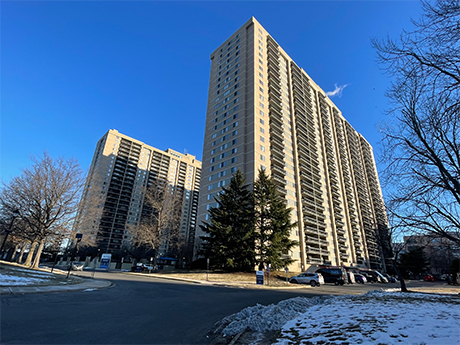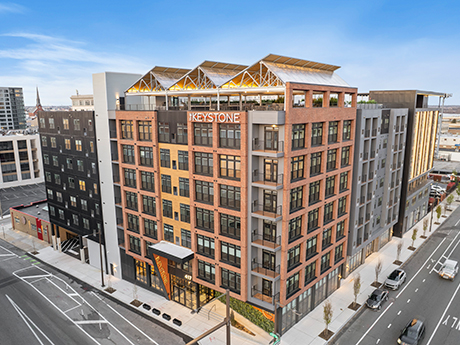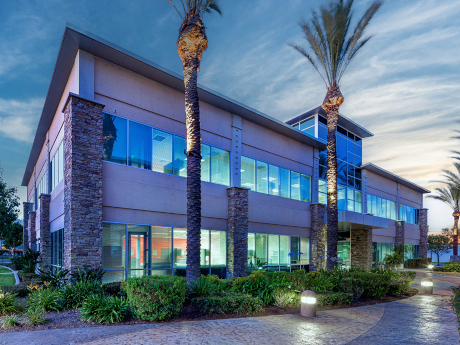Higher rents and lower turnover are a few of the key advantages build-to-rent (BTR) properties have over traditional multifamily product, according to investors. Meanwhile, the sector continues to experience strong demand from tenants priced out of the housing market as well as renters by choice who prefer flexible, maintenance-free living. BTR units typically have all the perks of a single-family home — privacy, garages and yards — without the hassles of landscaping or property maintenance. “The BTR sector is experiencing significant growth because it addresses a genuine need in today’s housing market,” says Khrista Villegas, managing director of Material Capital Partners (MCP), a Charleston, South Carolina-based development and investment firm focused on BTR communities in the Southeast and Midwest. “Many prospective residents are moving away from traditional apartments, seeking the space, privacy and community feel of a single-family home without the commitment and burden of ownership. This trend is especially pronounced among millennials and Gen Z renters who value lifestyle flexibility, outdoor space and neighborhood connectivity — features that traditional apartments often lack,” explains Villegas. (Gen Z, the demographic cohort succeeding millennials, includes persons born between approximately 1997 and 2012.) Many millennials and Gen Zers are postponing family formation, but …
Heartland Feature Archive
FeaturesHeartland Feature ArchiveNortheast Feature ArchiveSoutheast Feature ArchiveTexas & Oklahoma Feature ArchiveWestern Feature Archive
Forecast Survey: What’s Your Take on Commercial Real Estate in 2026?
by John Nelson
The editors of REBusinessOnline.com are conducting a brief online survey to gauge market conditions in 2026, and we welcome your participation. The survey should only take a few minutes to complete. Questions range from property sectors that you are most bullish on heading into 2026 to trends in deal volume to your outlook for interest rates. The results of our 15th annual survey will be compiled and published in the January issues of our regional magazines. Conducting these surveys is part of our mission at France Media to provide readers with indispensable information, and we couldn’t do it without your help. To participate in our broker/agent survey, click here. To participate in our developer/owner/manager survey, click here. To participate in our lender/financial intermediary survey, click here. (Note: Please remember to click on “done” to properly submit the survey.)
— By Sam Meredith of Colliers — After a slow and uncertain start to 2025, the retail market in Reno and Sparks is finally finding its stride. The first half of the year saw many tenants hit pause on leasing decisions as economic jitters made retailers cautious. By the third quarter, however, the mood had shifted. Leasing activity picked up noticeably, and tenants are now back in the market, actively looking for space. That momentum is expected to carry through the fourth quarter and into 2026, with healthy absorption on the horizon. This turnaround is backed by solid market indicators. Net absorption turned positive in the second quarter, while asking rents rose quarter over quarter. Vacancies nudged upward due to big-box closures, including three Big Lots and a Joann store early in the year, but the overall retail vacancy still sits at a manageable 5.4 percent. In fact, several submarkets, including North Valleys, Northwest Reno, South Reno and Southwest Reno, are reporting vacancy rates below 2 percent, showing strong demand in key areas. Retailers are clearly taking notice. Trader Joe’s, which once considered Northern Nevada a one-store market, has now opened two additional locations in Spanish Springs and South Reno. …
In JLL’s second-quarter “Retail Market Dynamics” report, “resilience” was the word used to describe the national retail investment landscape in the first half of 2025. Transaction volume reached $28.5 billion, a 23 percent increase over the same period a year ago. The figure also outpaces the long-term historical average of $27.7 billion for the first two quarters of the year, according to the brokerage firm. The scope of data includes all transactions $5 million and above for all retail asset subtypes. Retail investment sales brokers say there is plenty of capital flowing into the sector and more robust competition from institutional investors as of late. “We are seeing enhanced liquidity in the retail investment sales market from both an equity and debt perspective,” says Michael Neider, senior director with JLL Capital Markets in Chicago. “Total transaction volume is up in terms of deal volume and number of transactions, while cap rates are compressing.” Grocery-anchored and unanchored retail assets remain the most efficiently priced, but power center cap rates are compressing at a faster pace from their elevated levels, says Neider. “The spread between grocery-anchored cap rates and power center cap rates has narrowed from 166 basis points in 2023 — …
By Dan Sullivan, Modwall Today’s need for agility in both work environments and commercial spaces stems from several factors, from evolving understandings of workplace strategy, to shifting tenant needs, and even the demand for the adaptive reuse of aging building stock. Driven in part by these developments, the concept of “modularity” has surged in popularity. But with all of the buzz, the true meaning of the term has become conflated with the concepts of demountability and reconfigurability. In common parlance, many prefabricated solutions are being marketed as modular, and thus assumed to be demountable or reconfigurable. And while they may, in fact, be manufactured off site, they are merely “prefabricated” and lack the flexibility to adapt to evolving space needs. Truly reconfigurable design and construction is something else entirely. It’s not just about building faster, but smarter. A system that’s truly reconfigurable isn’t just modular or prefabricated — it’s reconfigurable by design; primed for disassembly and reconfiguration, and simple enough to break down traditional labor barriers. These systems work to extend the life cycle of commercial interiors, reduce waste and ultimately yield spaces that evolve in real time alongside those that use them. Disassembly as the baseline With fluctuating occupancy …
By Diane Batayeh, Village Green To be successful at multifamily property management involves equal parts of communication, alignment and trust. There are several stakeholder groups to consider when making decisions about how best to operate and set up an apartment community for long-term success. Between residents, employees and owners, there are differing and sometimes conflicting objectives and perspectives to consider. In today’s quickly evolving multifamily landscape, satisfying everyone can be challenging and it requires a delicate balance to maintain all stakeholders’ satisfaction while also achieving their respective goals. With the right approach, however, multifamily executives can successfully navigate the wants and needs of all parties and effectively sustain their trust and satisfaction while positioning the property to achieve economic success. Fostering connections In multifamily property management, everything matters — from the property’s aesthetic appearance to the friendliness of onsite staff to the property’s digital identity and website navigation experience. These touchpoints are often referenced by both prospects and residents when evaluating their living experience, making it imperative to maintain and uphold a positive impression. To protect a property’s reputation and best serve residents, it’s critical to remain aware of their impressions through regular resident surveys that measure preferences and satisfaction …
Affordable HousingDistrict of ColumbiaFeaturesHeartland Feature ArchiveMultifamilyMultifamily & Affordable Housing Feature ArchiveNortheast Feature ArchiveSoutheastSoutheast Feature ArchiveTexas & Oklahoma Feature ArchiveWestern Feature Archive
Why Fannie Mae, Freddie Mac Believe the Wind Is at Their Back
by John Nelson
Fannie Mae and Freddie Mac are adopting a more pro-business approach when it comes to closing multifamily loans in 2025 than in recent years, when sources say they were more selective. The two government-sponsored enterprises (GSEs) combined to produce 33 percent more multifamily loans in first-quarter 2025 compared with first-quarter 2024. “There is definitely a ‘volume on’ mindset at both shops,” says Landon Litty, director of agency sales at BWE. “This is a real positive for borrowers.” For Fannie Mae, the volume of multifamily loans totaled $11.8 billion in the first quarter of 2025, compared with $10.1 billion in the first quarter of 2024. Meanwhile, Freddie Mac produced approximately $15 billion in multifamily loans in the first quarter, financing around 144,000 rental units, well above the approximately $10 billion produced in first-quarter 2024. “The first quarter of 2025 has been dynamic, with real-time adjustments to meet market needs while maintaining a focus on soundness,” says a spokesperson at Freddie Mac Multifamily. Other sources attest that the GSEs are focusing on their sponsors more so than in previous years. T.J. Edwards, chief production officer for the multifamily finance division at Walker & Dunlop, says the agencies are proactively vetting first-time borrowers …
Necessity has sparked innovation across the multifamily sector. Property managers are implementing new technology platforms to streamline leasing, maintenance and resident communications because of rising operating costs, says Jim Cunningham, president of Naperville, Illinois-based Marquette Management, which owns or manages nearly 16,000 units across eight states. Operating costs increased 7 percent last year, according to CBRE. Rising insurance costs are one of the primary drivers. Property managers are also embracing technology to enhance resident satisfaction. Wendy Deetjen, vice president of Habitat’s market-rate portfolio, says that today’s renters expect more convenience, personalization and instant communication than in the past. Chicago-based Habitat manages more than 13,000 units across Illinois, Michigan and Minnesota. “Reputation management and resident engagement remain critical, and while staffing challenges persist industrywide, automation helps our teams focus on what matters most — delivering excellent service and building stronger communities,” says Deetjen. The automation and problem-solving capabilities that come with artificial intelligence (AI) free up property managers to devote more time to other tasks. This advancement is especially beneficial at a time when the labor supply is low. Cunningham says that labor in multifamily management remains tight but is improving. The industry faced a 4.1 percent turnover rate in 2024, …
By Timothy Rye, Esq., Larkin Hoffman Across the country, local governments are struggling to maintain revenue amid widespread property value declines, and as a result they are resorting to tax rate increases. This funding challenge increases the burden on owners of commercial properties that are already suffering and ultimately degrades property values and the overall tax base. Let’s examine how this unfortunate and predictable scenario plays out, and the negative impact it inflicts on commercial real estate values. Rate-to-Value Dynamics A commercial property’s taxes depend on its assessed value, which represents the property’s market value determined by a local government assessor. The assessed value multiplied by the tax rate determines the property tax owed. Taxing entities calculate the tax rate by dividing the budget, or dollar amount levied for an area, by the total assessed value of all properties within the jurisdiction. Taxpayers can multiply the resulting tax rate, also known as a mill rate, by the assessed value of their individual property to determine the tax owed. How can decreasing assessed property values lead to an increase in tax rates? When property values decline, the overall property tax base shrinks. The local government’s fiscal needs remain stable, however, or …
AcquisitionsDevelopmentFeaturesHeartland Feature ArchiveIllinoisLeasing ActivityMidwestRestaurantRetail
JLL: U.S. Retail Sector Remains Optimistic as Market Conditions Shift
by John Nelson
CHICAGO — Retail closures are at a cyclical high, totaling a whopping 9,900 business shutdowns in 2024, according to JLL’s fourth-quarter 2024 retail report entitled “United States Retail Market Dynamics.” For the first time in several years, store closures outpaced store openings in a calendar year. Fabric and crafts retailer JOANN, who filed for Chapter 11 bankruptcy protection twice within a year, is shuttering all 800 stores, while major department store chain Macy’s will close 150 stores over the next three years, with 66 closures anticipated in 2025 alone. The highest number of store closures resulted from discount and dollar stores like Family Dollar, CVS Health and Big Lots, as well as specialty retailers like Party City. Retail closures are represented across different size brackets, with more than 55 percent of announced closures identifying with footprints ranging from 5,000 square feet to 20,000 square feet. Expanding retailers such as Dollar General, O’Reilly Automotive and Five Below align with these vacant boxes, while larger, major closures like Bed Bath & Beyond and Toys “R” Us occupy more “desirable” locations. On the flip side, between 2024 and 2025, there were roughly 7,700 new retail store openings announced. Nearly 3,000 of these openings …
Newer Posts


